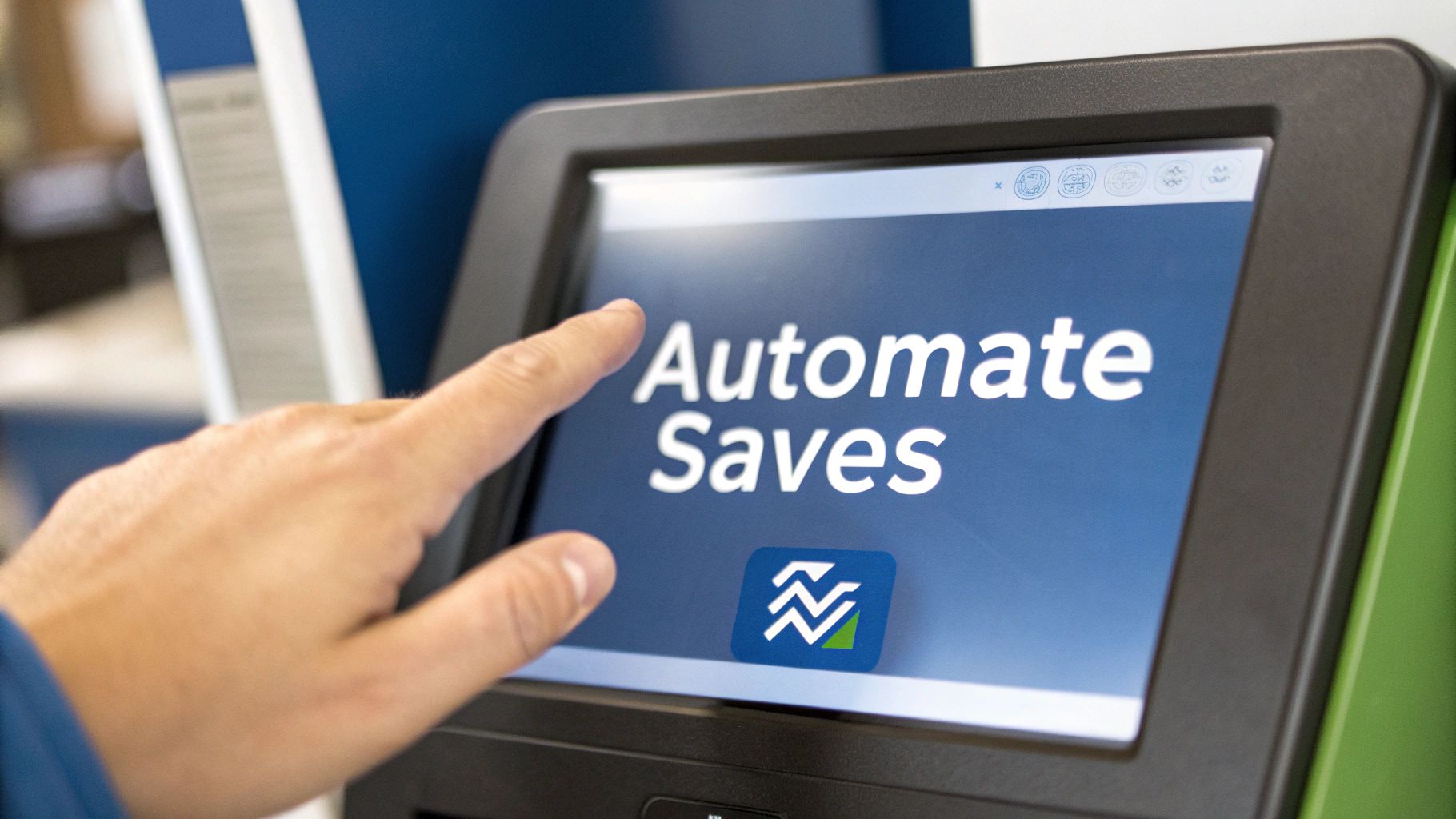Essential Document Version Control Best Practices: A Complete Guide for Modern Teams
Understanding Document Version Control Fundamentals
Document version control is a critical system for managing files and collaborating effectively. It helps teams access the correct document versions while avoiding the confusion of duplicate files with names like "Final," "Final(2)," and "Final_ACTUAL_Final." Good version control practices directly impact how efficiently teams work together and protect important business information.
Why Version Control is Essential
Picture your team working on an important proposal together. Without proper version control, team members can easily lose track of changes, use outdated information, or accidentally overwrite each other's work. This leads to wasted time fixing mistakes and lower quality deliverables. A solid version control system provides a single source of truth for every document, ensuring everyone works from the latest version and reducing errors.
Core Principles of Document Version Control
The foundation of effective version control rests on several key practices. First, establish clear naming conventions - for example, using a format like "Project_Proposal_v1.0_20241026" instantly shows the document's content, version, and last modified date. Second, implement centralized storage using a shared location like a cloud platform or dedicated server. This gives authorized team members easy access while preventing information silos.
Having a well-defined review and approval process is also essential. This means clearly outlining who can edit documents, what approval stages are required, and how to incorporate feedback. Cloud solutions like Google Drive, Microsoft SharePoint, and Dropbox automatically track changes and maintain version histories. Research shows that organizations using centralized document management systems see a 70% reduction in data loss and 40% improvement in collaboration efficiency. Learn more about version control best practices here.
Choosing the Right Tools
The right technology helps teams implement these version control practices effectively. Version control software can automate change tracking, version management, and team collaboration. Options range from basic cloud storage to specialized document management systems. Choose tools based on your team size, document complexity, and security needs. When you combine solid principles with appropriate technology, you can create reliable document workflows that help teams work more efficiently while keeping files secure.
Implementing Powerful Version Numbering Systems

A clear version numbering system forms the foundation of good document management. Simply adding "v1" or "final" to filenames isn't enough - you need a structured approach that shows how documents evolve over time. This helps teams avoid the headache of sorting through confusing files like "Final_v2_revised_final" while making collaboration smoother and reducing errors.
Choosing the Right Versioning Approach
Different version numbering approaches suit different needs. The sequential system (v1.0, v1.1, v1.2) works well for straightforward projects - minor changes increase the decimal, while major updates bump up the whole number. For instance, fixing typos might move from v1.0 to v1.1, while adding new sections would warrant v2.0. Projects with multiple workstreams may need branching instead, using labels like v2.0-branchA to track parallel versions.
Adding Descriptive Elements for Clarity
Numbers alone don't tell the full story. Adding status markers like "Draft," "Review," or "Final" gives instant context about where a document is in its lifecycle. For example, "ProjectPlan_v2.1_Review" immediately shows both the version and current phase. Including dates in filenames or metadata adds another helpful reference point. Teams that implement clear version systems report up to 90% fewer document mix-ups and errors. Learn more about version control best practices at PlanRadar.
Balancing Simplicity and Scalability
Your version system needs to be both easy to use and able to grow with your needs. An overly complex system causes confusion and inconsistent use, while one that's too basic may not track changes well enough. Consider your team's size, project types, and typical document workflows when deciding on an approach.
Practical Tips for Implementation
Rolling out a new version system takes careful planning. Start by writing clear guidelines that explain the system and include plenty of examples. Make sure to train your team on how to use it properly, focusing on why it matters and how it makes everyone's work easier. Build the version rules into your document tools and processes so they become a natural part of how work gets done. When everyone follows the same clear system, you avoid confusion and keep projects moving smoothly.
Selecting Version Control Tools That Actually Work
Picking the right version control tools makes a big difference in how well your team manages documents. Rather than getting caught up in marketing promises, focus on what your team really needs. Take time to understand your current workflow, think about future growth, and carefully weigh the strengths and limitations of different options.
Key Features to Consider
A good version control system needs to do more than just store files. Here are the essential features to look for:
- Centralized Repository: Keep all documents in one secure place so everyone works from the same latest versions. This is fundamental for effective document management.
- Version History Tracking: Get automatic records of who changed what and when, making it easy to review changes or restore previous versions.
- Collaboration Tools: Enable team members to edit together in real-time, add comments, and share feedback directly in documents.
- Integration Options: Connect smoothly with your other key tools like project management or CRM systems to keep information flowing.
- Security Controls: Protect sensitive content through encryption, permission settings, and compliance features.
- Room to Grow: Make sure the system can expand as your team and document needs increase over time.
Comparing Popular Platforms
This table breaks down how different types of tools stack up:
| Feature | Cloud Storage (e.g., Google Drive, Dropbox) | Dedicated Document Management Systems (e.g., M-Files) | Version Control Software (e.g., Git) |
|---|---|---|---|
| Centralized Repository | Yes | Yes | Yes |
| Version History | Basic | Advanced | Advanced |
| Collaboration | Basic | Advanced | Varies |
| Integrations | Limited | Extensive | Varies |
| Security | Varies | High | High |
| Scalability | High | High | High |
Choosing the Right Fit
Cloud storage works well for basic needs but may fall short for complex projects. Document management systems offer strong features but cost more. Git and similar tools can handle documents but need technical know-how to use effectively.
Pick the option that matches your actual needs and budget. Consider your team size, how complex your documents are, and what security level you require. The right tool, combined with clear document management practices, will help your team work more efficiently with their files.
Creating Bulletproof Document Control Workflows

Well-organized document control workflows are essential for maintaining both efficiency and security in complex team environments. The key is creating clear processes for approval, review, and change management that work in practice, not just in theory.
Designing Effective Approval Processes
A successful approval system needs to be straightforward and easy to follow. Here are the core elements needed:
- Define Roles and Responsibilities: Make it crystal clear who can approve, edit, or view specific documents
- Automate Notification and Tracking: Set up systems to alert team members when they need to take action
- Set Standardized Review Periods: Create fixed timelines to prevent documents from getting stuck in approval limbo
Implementing Review Cycles That Maintain Momentum
Regular document reviews help maintain quality without overwhelming the team. For best results:
- Schedule Regular Reviews: Set specific times to review documents so nothing falls through the cracks
- Centralize Feedback: Keep all comments and suggestions in one place - for example, Filestage lets reviewers compare versions side-by-side
This structured approach ensures input from all stakeholders gets properly documented and considered.
Change Management Procedures Across Dynamic Teams
Good change management makes document updates smooth instead of stressful. Focus on these key areas:
- Version History Tracking: Record who made changes and when for clear accountability
- Standardized Templates: Create templates for different document types to maintain consistency
Here's how effective and ineffective practices compare:
| Aspect | Effective Practices | Ineffective Practices |
|---|---|---|
| Approval Processes | Defined roles, automated tracking | Vague responsibilities, manual notifications |
| Review Cycles | Regular scheduling, centralized feedback | Infrequent reviews, dispersed comments |
| Change Management | Version tracking, adaptable templates | Lack of tracking, no templating |
The best document control systems balance structure with flexibility. By focusing on clear processes that work for your team's specific needs, you can build workflows that actually get followed. For organizations needing secure document handling, Whisperit offers tools designed for industries like healthcare and legal services where privacy is paramount.
Building a Version Control Culture That Sticks

Making lasting changes to how teams manage documents requires more than just implementing new tools. Success comes from understanding behavioral psychology and change management principles to create habits that stick. The key is addressing concerns early and showing clear value to get teams genuinely invested.
Overcoming Initial Resistance
People often resist change when they don't see how it will help them. The best approach is showing real examples of version control benefits - like comparing the confusion of having multiple "final" versions floating around versus the clarity of a single source of truth. When teams see how it makes their work easier, resistance fades.
Engaging Training Programs
People learn differently, so training needs to match various learning styles. Mix up the approach with hands-on practice sessions, visual guides, and real examples from your organization. Share concrete wins, like how proper version control has led to a 70% drop in lost documents at other companies. This helps teams understand the practical value.
Maintaining Momentum and Building Accountability
Getting started is one thing - keeping it going is another. Set up regular check-ins where teams can share what's working and what isn't. Make responsibilities clear so everyone knows their role in the document workflow. Some proven approaches include:
- Recognition Programs: Call out teams doing version control well
- Regular Check-ins: Keep version control part of daily discussions
- Document Champions: Have experienced users mentor others
This creates an environment where good version control becomes second nature.
Celebrating Successes and Adapting to Change
Share stories about how version control has improved work - like finding old document versions quickly or avoiding duplicate work. As your organization grows, review and update processes to match new needs while keeping what works. The goal is making version control feel natural, not forced.
By weaving these practices into daily work, version control becomes automatic. Teams see the benefits firsthand and maintain good habits because they want to, not because they have to. To see how our solution combines voice dictation with secure document control, visit Whisperit.
Measuring and Evolving Your Version Control Strategy

Good document version control requires constant monitoring and adjustment to stay effective. By tracking key data points and making targeted improvements, you can strengthen your approach over time to better serve your team's needs.
Understanding Key Metrics for Success
To improve your version control system, start by measuring what matters most:
- Version Accuracy: Track how often documents have errors or inconsistencies between versions
- Team Efficiency: Monitor how much time people spend managing and working with documents
- User Feedback: Ask team members directly about their experience and pain points
These concrete measurements show you exactly where your system excels and where it needs work.
Gathering and Analyzing Feedback
Regular feedback from your team provides essential insights for improvement. Set up simple surveys asking specific questions about what's working and what isn't in your current processes. Tools like Whisperit can help collect and analyze this feedback systematically.
Practical Frameworks for Optimization
Make improvements systematically using these proven approaches:
- Regular Audits: Review your processes every quarter to spot bottlenecks and issues
- Industry Comparison: See how your metrics stack up against similar organizations
- Small-Scale Testing: Try new methods with a small team first before rolling out widely
Implementing System Changes
When you're ready to make changes, follow these steps for smooth adoption:
- Small Steps: Make one improvement at a time rather than major overhauls
- Ongoing Training: Help teams adapt through regular learning sessions
- Clear Documentation: Write down all process changes for future reference
By consistently measuring results and making focused improvements, you can build a more robust document management system. For help optimizing your workflow, check out Whisperit, which many organizations trust for secure, efficient document handling.